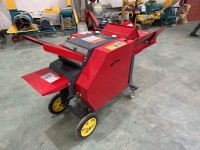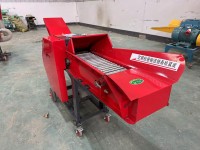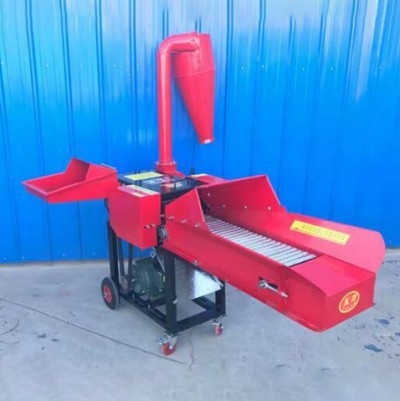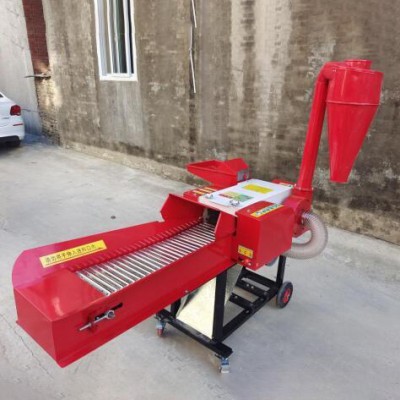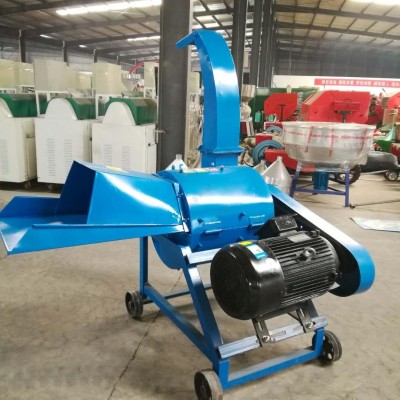
The following are the methods for determining whether the wearing parts of the hay cutter need to be replaced:
Cutting Blades
• Decline in cutting quality: If the lengths and thicknesses of the forage cut by the hay cutter are uneven, or there are many uncut parts, it is very likely that the cutting blades have become dull. For example, if it could originally cut the forage neatly into uniform small sections of 3 - 5 centimeters, but now a large amount of forage longer than 8 centimeters appears, or some forage is still connected in strands, it indicates that the cutting blades may need to be replaced.
• Degree of blade wear: Regularly check the cutting edges of the blades. When obvious notches, rolled edges appear on the cutting edges, or when the blades are worn to a certain thickness (usually the blade manufacturer will have a recommended minimum cutting edge thickness), replacement should be considered. For instance, if the metal part of the blade edge is worn by more than 2 - 3 millimeters, it will affect the cutting effect.
• Abnormal cutting sound: When the cutting blades are sharp, the sound of cutting the forage is relatively crisp and neat. When you hear that the cutting sound becomes dull and sluggish, it may be caused by the blades becoming dull and the increase in cutting resistance. At this time, it is necessary to check whether the cutting blades need to be replaced.
Belts
• Slack phenomenon: Belts may become slack after being used for a period of time. Check the tension of the belts. If it is found that the belts are obviously slack and when pressing the middle part of the belt, the belt sags beyond the normal range (generally more than 1 - 2 centimeters), it will lead to poor power transmission, and the belt needs to be adjusted or replaced.
• Wear and cracking: Check whether there is wear or cracking on the surface of the belts. If there are wear marks on the surface of the belts, or there are many fine cracks, especially on the edge parts of the belts which are prone to damage, this will affect the service life and transmission efficiency of the belts, and replacement should be considered.
Bearings
• Abnormal noise: During the operation of the hay cutter, if you hear harsh and irregular noises from the bearing parts, such as a "buzzing" or "clicking" sound, it may be that the bearings are worn or damaged, and there are problems with the internal balls or raceways.
• Unsmooth operation: Manually turn the components connected to the bearings, such as the cutter shaft or the feeding shaft. If you feel a significant resistance, or when the machine is running, the rotational speeds of these components are unstable, sometimes fast and sometimes slow, it may be that the bearings are damaged and need to be replaced.
View document


 English
English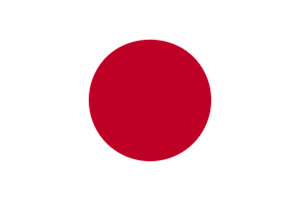 日本
日本 한국인
한국인 Français
Français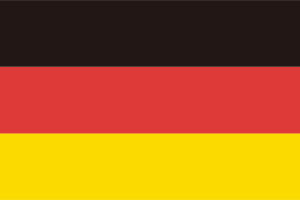 Deutsch
Deutsch español
español Italiano
Italiano Portugal
Portugal Việt Nam
Việt Nam türkiye
türkiye عرب
عرب Русский
Русский čeština
čeština แบบไทย
แบบไทย Eesti
Eesti Gaeilge
Gaeilge Hmoob
Hmoob íslenskur
íslenskur Cymraeg
Cymraeg български
български اردو
اردو Polski
Polski Hrvatski
Hrvatski українська
українська bosanski
bosanski فارسی
فارسی lietuvių
lietuvių latviski
latviski עִברִית
עִברִית Română
Română Ελληνικά
Ελληνικά dansk
dansk Magyar
Magyar norsk
norsk Suomalainen
Suomalainen Nederlands
Nederlands svenska
svenska slovenský
slovenský Slovenščina
Slovenščina हिंदी
हिंदी Indonesia
Indonesia Melayu
Melayu Malti
Malti Kreyòl ayisyen
Kreyòl ayisyen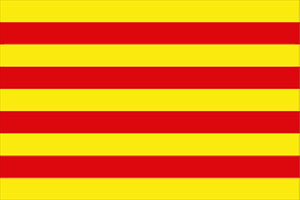 català
català বাংলা
বাংলা Српски
Српски o'zbek
o'zbek

